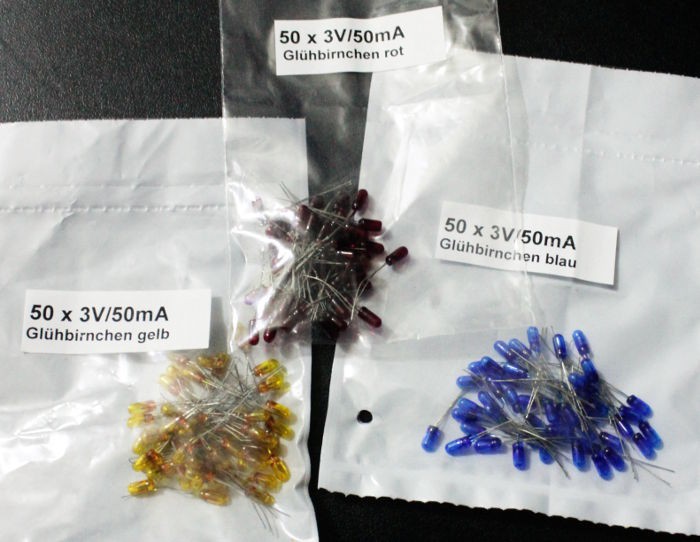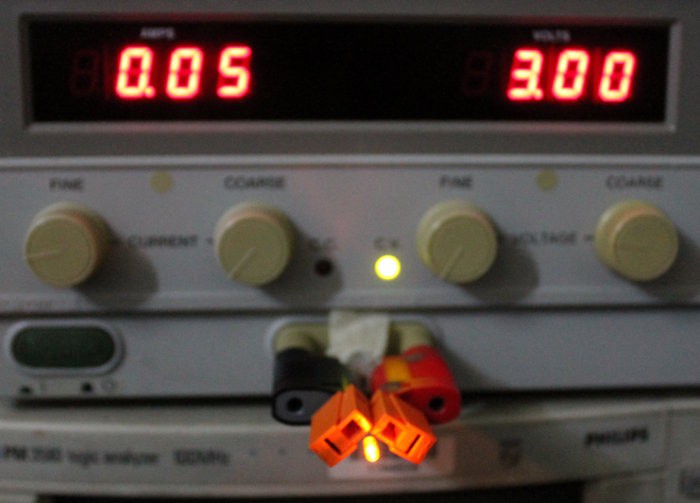I received the tiny incandescent lamps and they are cuuuute !
The initial electrical tests showed agreement with the advertised characteristics.
50mA@3V: check
In particular I'm interested by the potential interaction with the relay's coil during startup so I tried to evaluate the I/V curve with the crude reading of the power supply.
The following values are in "static" situation, with enough time for the filament to heat, at about 20°C ambiant temperature.
10mA@0,01V (it's mostly a short !)
20mA@0.14V
30mA@0.58V
40mA@1.27V (starts to glow)
50mA@2.17V
Should I put the lamp in series or parallel with the relay coil ? It might have have interesting advantages, such as proving the relay is energized but this can provide false negatives if the filament is broken, it forces an increase of current or voltage (more power) and the hysteresis (due to slower thermal characteristics) might interfere with relay operation.
- In series : the failure of the lamp will result in the failure of the relay operation. The interesting effect is during relay turn-on : the lamp is initially cold and will let all the current pass. The heating time might be in the same order of magnitude as the relay actuation so by the time the lamp is hot and reduces the current (becomes resistive) the relay should be working. This should result in a reduction of coil current with a moderate increase of operating voltage (4V at the supply ?). The lamp will glow lightly, depending on power voltage and relay characteristics (TBD) but I don't need the thing to blind the viewer :-)
For release, I don't know if the clamp diode must be before or after the lamp. Keeping the lamp in the loop will help dissipate the energy faster and let the coil release easily. Otherwise, clamping to the power rails will work too... - In parallel : This is interesting for the release, helping keeping the current flowing through the coil (maybe replacing a clamping diode).
However turn-on will almost make a short-circuit (the lamp will dominate the inrush current), thus increasing noise in the power supply rails.
So it's mostly a question of "do I make noise when the coil is switched on or off ?"
This will also depend on the coil's characteristics so I'll have to test both circuits. The decision might depend on the power : parallel increases the current, series increases the voltage. I suppose series might win but measurements should decide.
Oh and 4V would make it compatible with the TIL311 power requirements...
 Yann Guidon / YGDES
Yann Guidon / YGDES

Discussions
Become a Hackaday.io Member
Create an account to leave a comment. Already have an account? Log In.